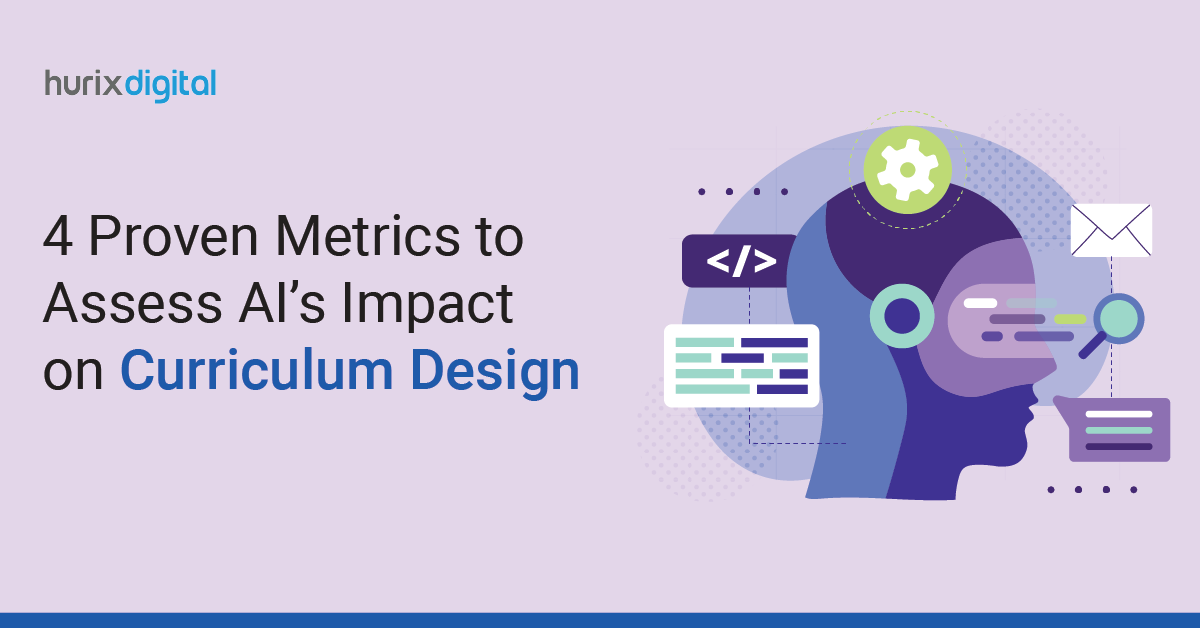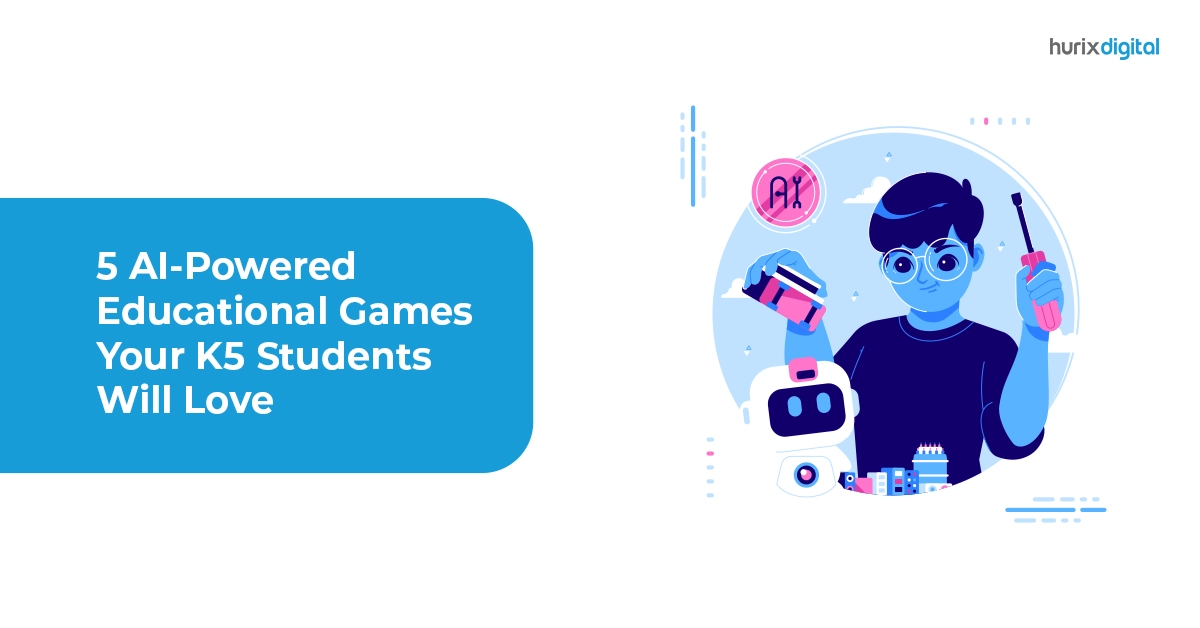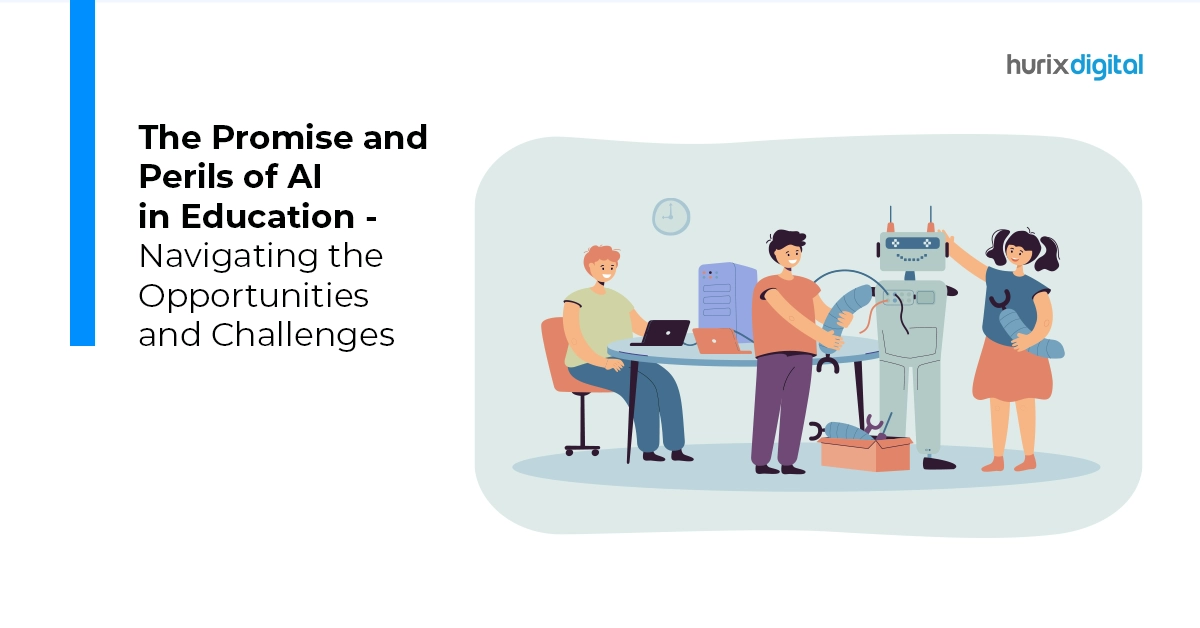
4 Proven Metrics to Assess AI’s Impact on Curriculum Design
Summary
The blog explores AI’s role in transforming curriculum design in higher education, emphasizing measuring its impact through student performance, engagement, retention, and curriculum update efficiency.
AI in education is a hot topic and a 5,440.5 million dollar market, but too often, it’s discussed in broad strokes. Therefore, we lack a deeper exploration of how AI shapes specific field areas. In curriculum design, the impact of AI is impressive and transformative.
We are talking about a curriculum that isn’t limited to reacting to student needs. It also anticipates them, adjusts in real-time, and evolves based on precise data insights, thus creating more dynamic and personalized learning experiences.
However, with these advancements comes the need to measure AI’s effectiveness to truly understand its ROI and educational value.
Curious about how to track and assess this impact? Read on to discover the key metrics and strategies that higher education leaders need to evaluate the role of AI in curriculum design.
Table of Contents:
- The Importance of Measuring AI’s Impact on Curriculum Design
- Key Metrics to Evaluate AI in Curriculum Design
- Key Strategies for Successful AI Integration in Curriculum Development
- To Wrap Up
The Importance of Measuring AI’s Impact on Curriculum Design
From collecting basic data to potent, real-time insights that influence the learning process, artificial intelligence has advanced significantly in higher education. Early AI applications, like educational data mining, helped universities analyze basic student performance trends. With the rise of learning analytics, institutions can track and adapt to individual learning patterns in real time.
However, as AI becomes more embedded in curriculum design, measuring its actual impact is essential. Institutions risk relying on AI without tracking specific metrics and understanding if it genuinely enhances learning outcomes. It’s worth mentioning that measuring AI’s role in curriculum design goes beyond determining its ROI. It focuses on ascertaining that AI integration leads to measurable improvements in student engagement, retention, skill development, and more.
Data-driven decision-making in curriculum design ensures that resources are distributed efficiently and that AI solutions are actually helping pupils. Key performance indicators and benchmarks allow higher education institutions to assess the efficacy of AI and improve their approaches over time. Therefore, it’s extremely crucial to monitor such KPIs for the best higher education outcomes.
Also Read: Data Privacy in Education Through FERPA and GDPR Adherence
Key Metrics to Evaluate AI in Curriculum Design
Now that you have understood the importance of measuring the impact of AI in curriculum design, here are the four essential metrics to keep an eye on for understanding AI’s true impact on curriculum design:
1. Student Performance & Learning Outcomes
AI’s primary role in curriculum design is to enhance student learning, so tracking performance improvements is crucial. Metrics here include:
- Grades
- Competency development
- The speed at which students master specific skills
AI tools can personalize learning by identifying each student’s strengths and weaknesses, suggesting resources, or adapting lesson pacing. The question then becomes: Are students demonstrating improved understanding and skill mastery in these AI-enhanced environments? Are assessment scores reflecting this support?
Thus, by monitoring these metrics, institutions can see if AI interventions directly support student success or if adjustments are needed to meet specific learning goals.
2. Engagement Level
AI can improve student engagement by tailoring content to individual preferences and learning speeds. Studies show that 54% of students report higher engagement in their coursework when AI tools are integrated into their learning experience. The engagement metrics are:
- Time spent on assignments
- Frequency of logins
- Participation in interactive modules
- Usage of AI-driven resources, etc.
These metrics can reveal whether AI personalization efforts are making a tangible difference or, once again, further refinement is required to keep students actively involved in the learning process.
3. Retention and Completion Rates
One of the biggest challenges in higher education is keeping students on track to complete their studies. AI in curriculum development can predict and address early signs of dropout risk by analyzing the following:
- Behavioral patterns
- Attendance
- Overall Academic performance
Monitoring retention rates helps institutions evaluate whether their AI-driven curriculum effectively supports students’ staying on course. Improvements in these rates can often signify that AI tools are successfully intervening at critical moments and guiding students toward completion.
4. Rates Efficiency in Curriculum Updates
Curriculum updates must be timely and relevant in a constantly changing world. AI tools can help organize this process by making updates more efficient and aligned with current industry trends.
A key metric is the time and effort required to revise and deploy new curriculum content. Institutions can evaluate AI’s effects on these cycles to determine whether integrating AI is assisting them in maintaining a curriculum that is both current and resource-efficient.
Key Strategies for Successful AI Integration in Curriculum Development
A structured approach is required to successfully integrate AI into curriculum design. Here’s an ideal way to get started:
- Setting clear objectives is the first step. Institutions must define specific goals for AI’s role in improving student outcomes, engagement, operational efficiency, etc. Thus, defined objectives act as benchmarks. They help design and assess AI interventions to ensure they align with broader institutional goals.
- Data quality and privacy considerations are also critical. AI relies on accurate, relevant data to function effectively. Institutions must ensure that data inputs are reliable and detailed for AI systems to provide meaningful insights. At the same time, adherence to privacy standards and regulations like the Family Educational Rights and Privacy Act is essential to protect student information and maintain trust.
- Constant monitoring and adjustments. Regular monitoring and modifications are required for AI projects to succeed in the long run. Regular audits of AI outputs can help identify areas for improvement and ensure that the AI’s recommendations remain aligned with educational objectives.
- Lastly, training and support for faculty are non-negotiable. Faculty must have the skills and knowledge to effectively use AI tools in their teaching. Ongoing professional development ensures faculty can utilize AI to improve their curriculum and respond dynamically to student needs.
Also Read: WCAG 508 Compliance for eLearning Platforms: Best Practices for Higher Education
To Wrap Up
As AI becomes more integral to education, it’s essential to go beyond the hype and focus on real, measurable impacts. By defining clear goals, tracking meaningful metrics, and ensuring data quality, higher education leaders can make AI a true asset to curriculum design. With these strategies in check, AI is your partner in creating responsive, student-centered learning experiences that adapt and evolve.
Hurix Digital crafts customized courseware development solutions, which include program and curriculum design, content authoring, and media development services. We empower higher education institutions to deliver compelling, student-centered learning experiences.

Senior Vice President – Business Development
Over 25 years of experience in the edtech and workforce learning industry with strong skills in Business Development, Customer Relationship Management (CRM) and Strategy.







